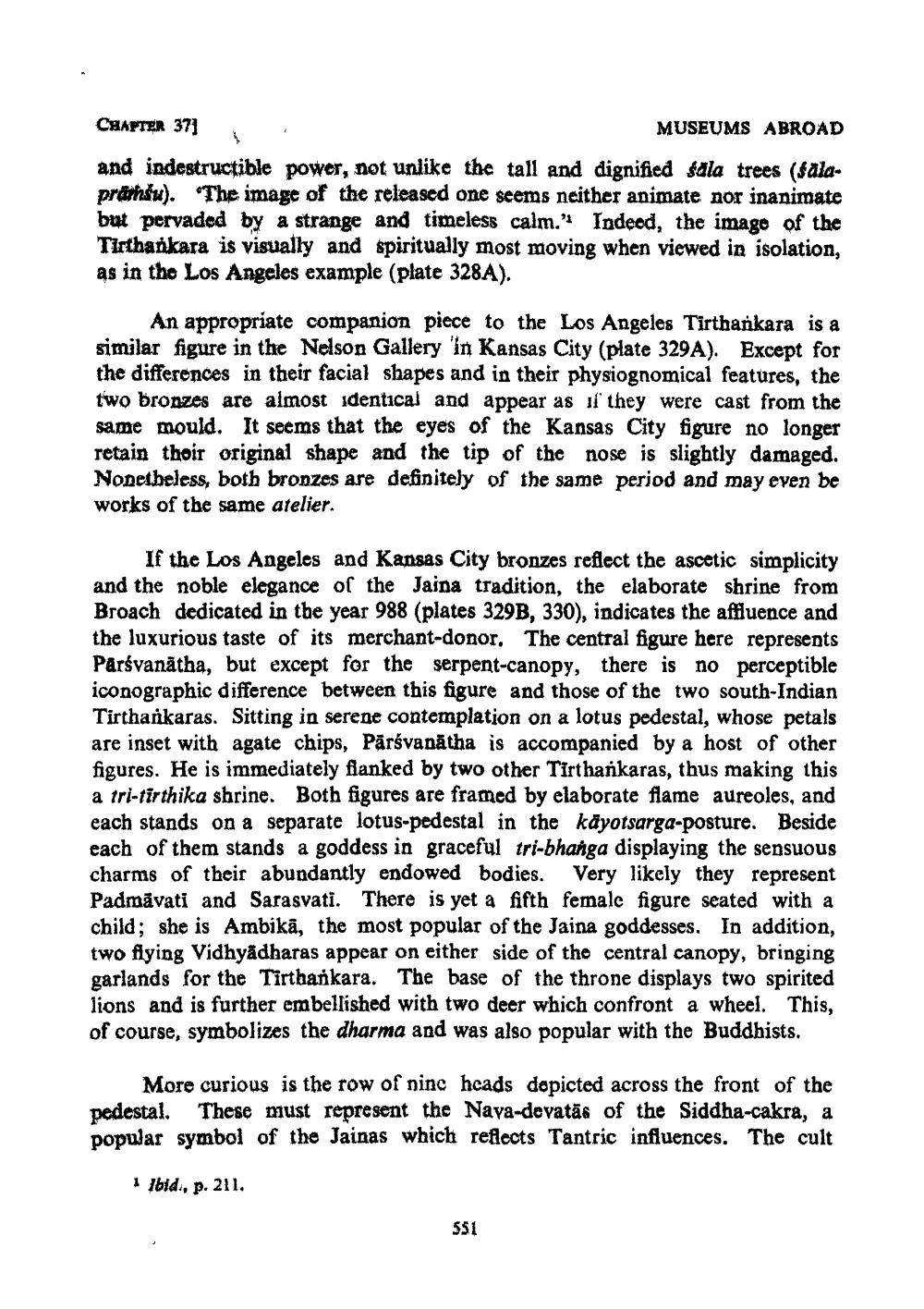________________
CHAPTER 371
MUSEUMS ABROAD
and indestructible power, not unlike the tall and dignified sala trees (Salaprašu). "The image of the released one seems neither animate nor inanimate but pervaded by a strange and timeless calm." Indeed, the image of the Tirtharkara is visually and spiritually most moving when viewed in isolation, as in the Los Angeles example (plate 328A).
An appropriate companion piece to the Los Angeles Tirthankara is a similar figure in the Nelson Gallery 'in Kansas City (plate 329A). Except for the differences in their facial shapes and in their physiognomical features, the two bronzes are almost identical and appear as if they were cast from the same mould. It seems that the eyes of the Kansas City figure no longer retain thoir original shape and the tip of the nose is slightly damaged. Nonetheless, both bronzes are definitely of the same period and may even be works of the same atelier.
If the Los Angeles and Kansas City bronzes reflect the ascetic simplicity and the noble elegance of the Jaina tradition, the elaborate shrine from Broach dedicated in the year 988 (plates 329B, 330), indicates the affluence and the luxurious taste of its merchant-donor. The central figure here represents Parsvanätha, but except for the serpent-canopy, there is no perceptible iconographic difference between this figure and those of the two south-Indian Tirtharkaras. Sitting in serene contemplation on a lotus pedestal, whose petals are inset with agate chips, Pārsvanātha is accompanied by a host of other figures. He is immediately flanked by two other Tirtharkaras, thus making this a tri-tirthika shrine. Both figures are framed by elaborate flame aureoles, and each stands on a separate lotus-pedestal in the käyotsarga-posture. Beside each of them stands a goddess in graceful tri-bhanga displaying the sensuous charms of their abundantly endowed bodies. Very likely they represent Padmavati and Sarasvati. There is yet a fifth female figure seated with a child; she is Ambikā, the most popular of the Jaina goddesses. In addition, two flying Vidhyadharas appear on either side of the central canopy, bringing garlands for the Tirtharkara. The base of the throne displays two spirited lions and is further embellished with two deer which confront a wheel. This, of course, symbolizes the dharma and was also popular with the Buddhists.
More curious is the row of ninc heads depicted across the front of the pedestal. These must represent the Nava-devatās of the Siddha-cakra, a popular symbol of the Jainas which reflects Tantric influences. The cult
1 Ibid., p. 211.
$51




